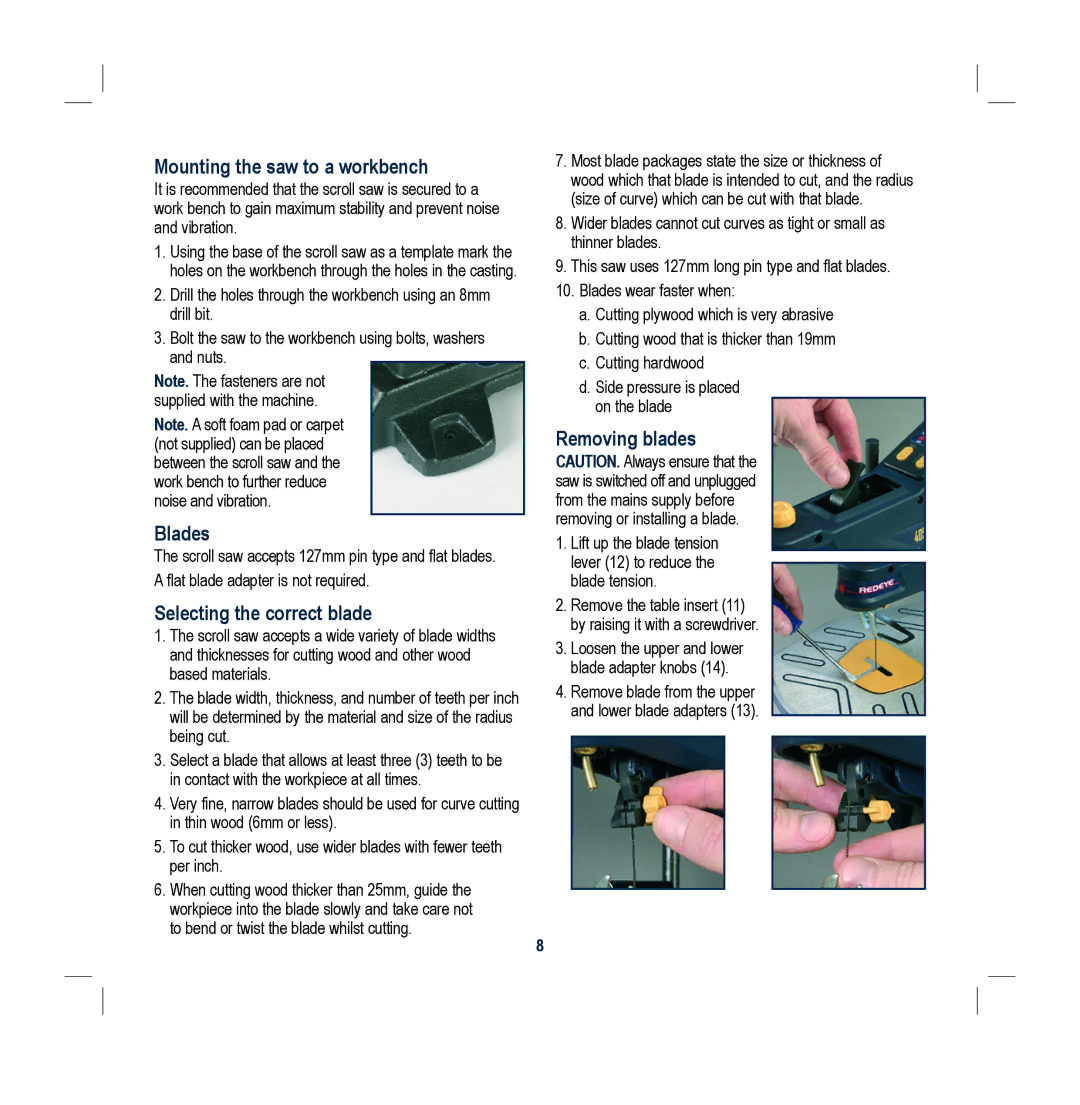
Mounting the saw to a workbench
It is recommended that the scroll saw is secured to a work bench to gain maximum stability and prevent noise and vibration.
1.Using the base of the scroll saw as a template mark the holes on the workbench through the holes in the casting.
2.Drill the holes through the workbench using an 8mm drill bit.
3.Bolt the saw to the workbench using bolts, washers and nuts.
Note. The fasteners are not supplied with the machine.
Note. A soft foam pad or carpet (not supplied) can be placed between the scroll saw and the work bench to further reduce noise and vibration.
Blades
The scroll saw accepts 127mm pin type and flat blades. A flat blade adapter is not required.
Selecting the correct blade
1.The scroll saw accepts a wide variety of blade widths and thicknesses for cutting wood and other wood based materials.
2.The blade width, thickness, and number of teeth per inch will be determined by the material and size of the radius being cut.
3.Select a blade that allows at least three (3) teeth to be in contact with the workpiece at all times.
4.Very fine, narrow blades should be used for curve cutting in thin wood (6mm or less).
5.To cut thicker wood, use wider blades with fewer teeth per inch.
6.When cutting wood thicker than 25mm, guide the workpiece into the blade slowly and take care not to bend or twist the blade whilst cutting.
7.Most blade packages state the size or thickness of wood which that blade is intended to cut, and the radius (size of curve) which can be cut with that blade.
8.Wider blades cannot cut curves as tight or small as thinner blades.
9.This saw uses 127mm long pin type and flat blades.
10.Blades wear faster when:
a.Cutting plywood which is very abrasive
b.Cutting wood that is thicker than 19mm
c.Cutting hardwood
d.Side pressure is placed on the blade
Removing blades
CAUTION. Always ensure that the saw is switched off and unplugged from the mains supply before removing or installing a blade.
1.Lift up the blade tension lever (12) to reduce the blade tension.
2.Remove the table insert (11) by raising it with a screwdriver.
3.Loosen the upper and lower blade adapter knobs (14).
4.Remove blade from the upper and lower blade adapters (13).
8
